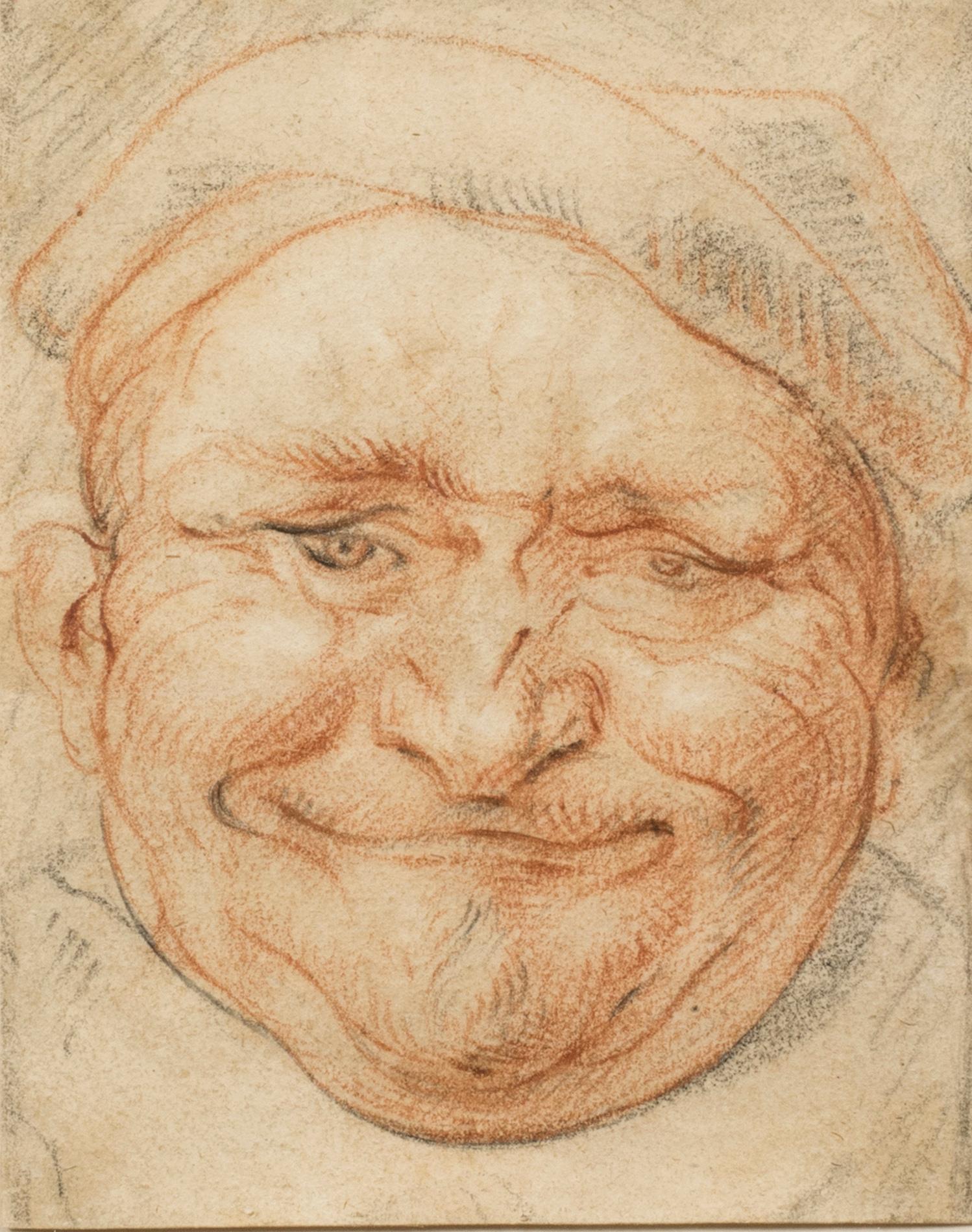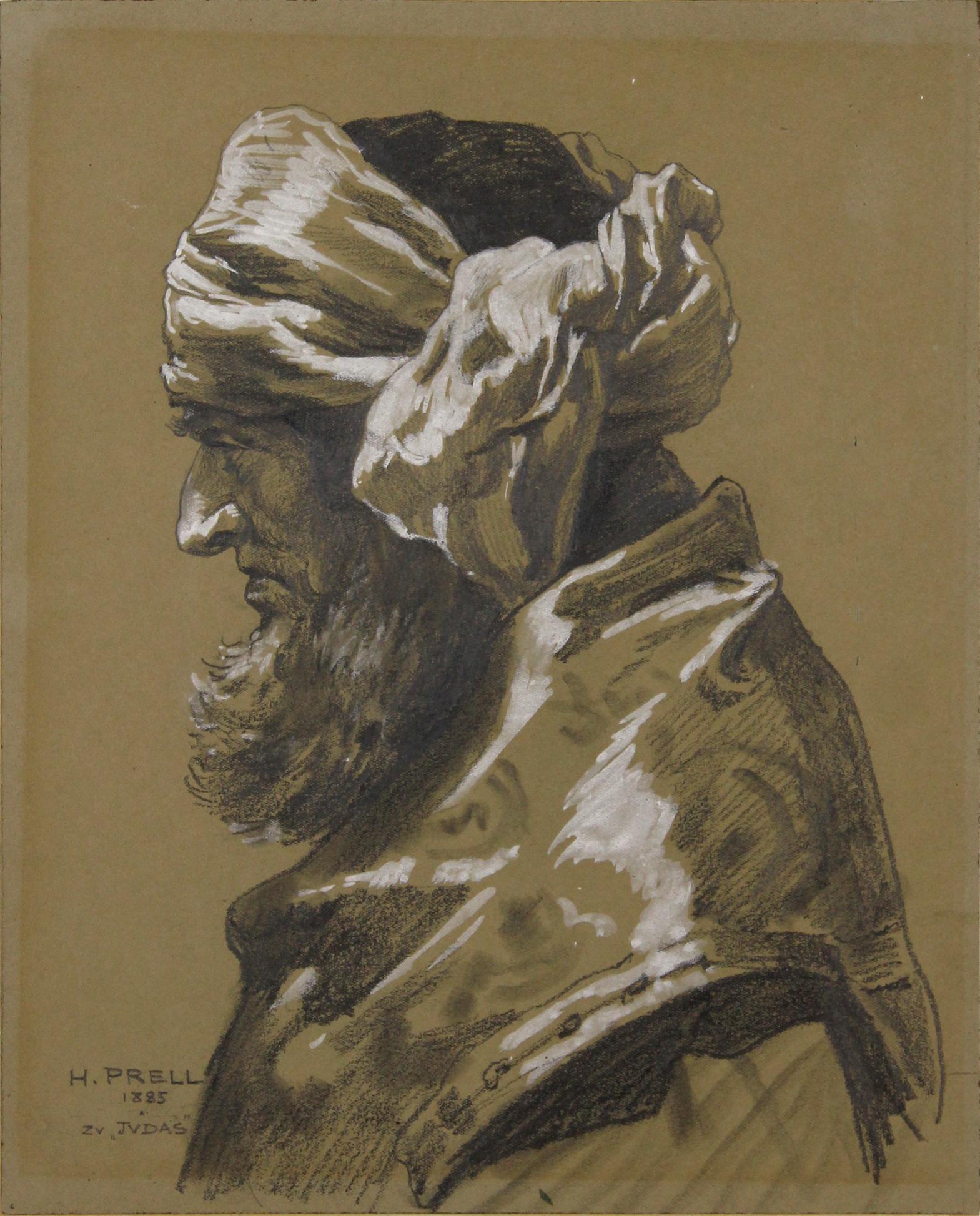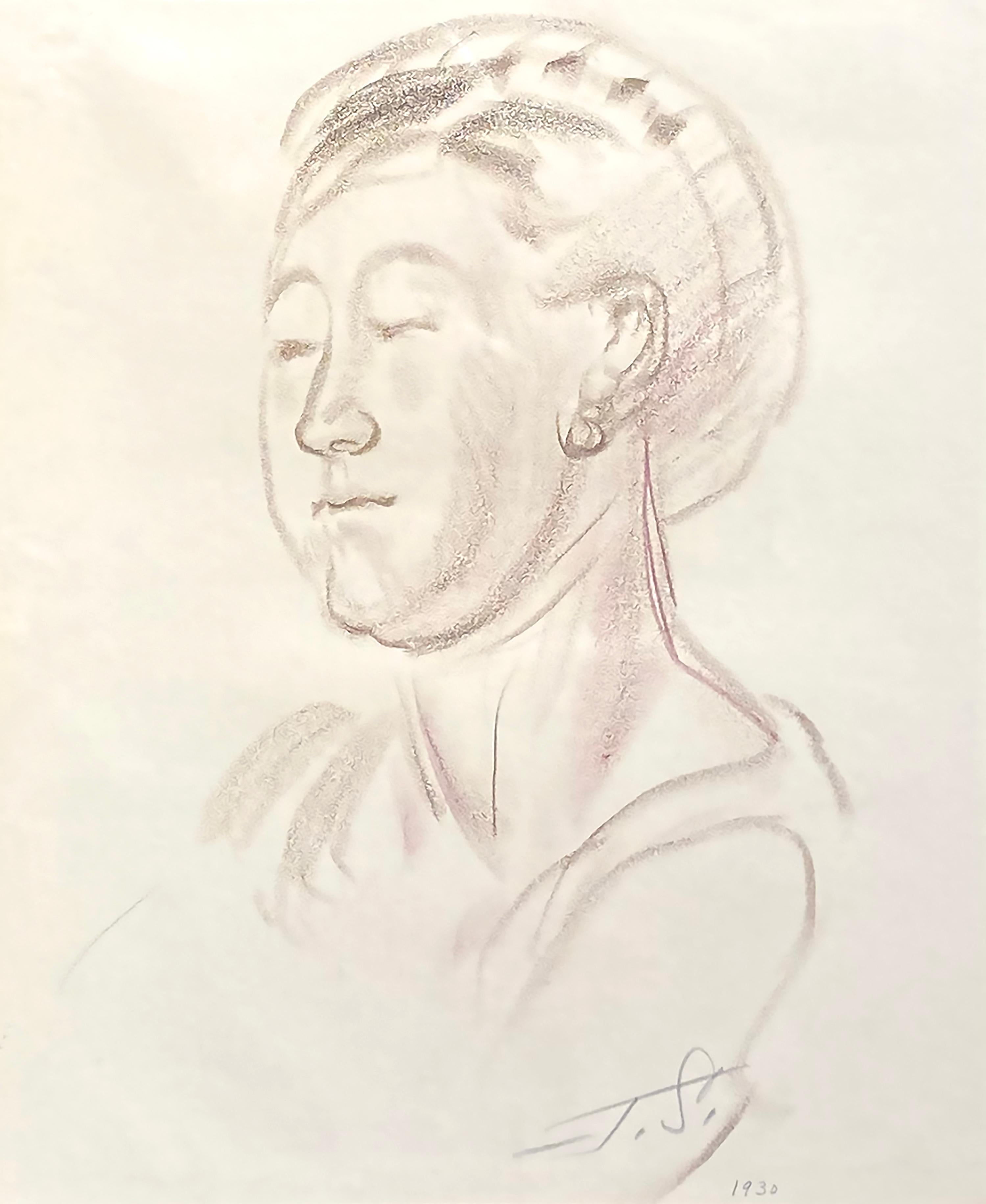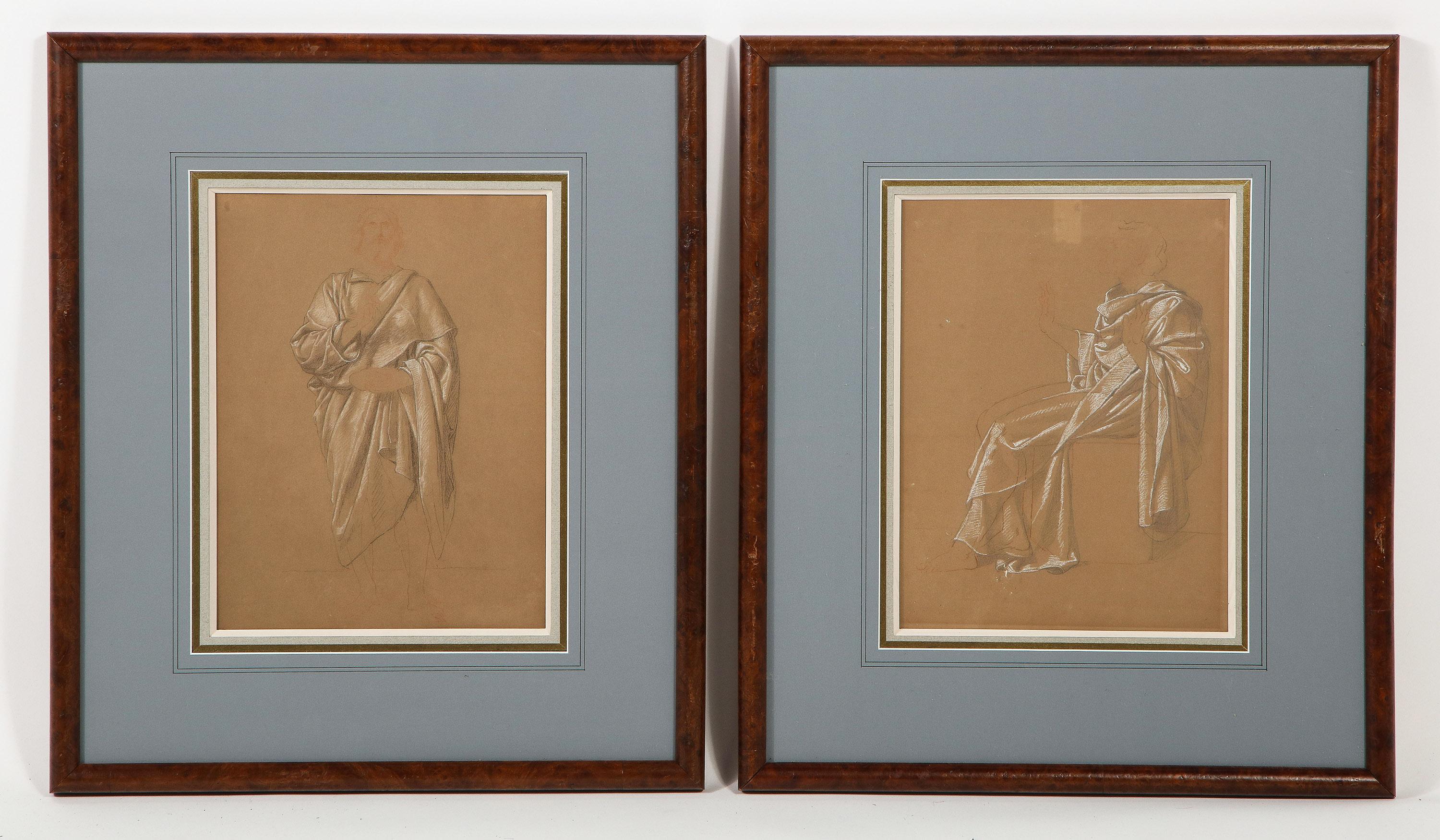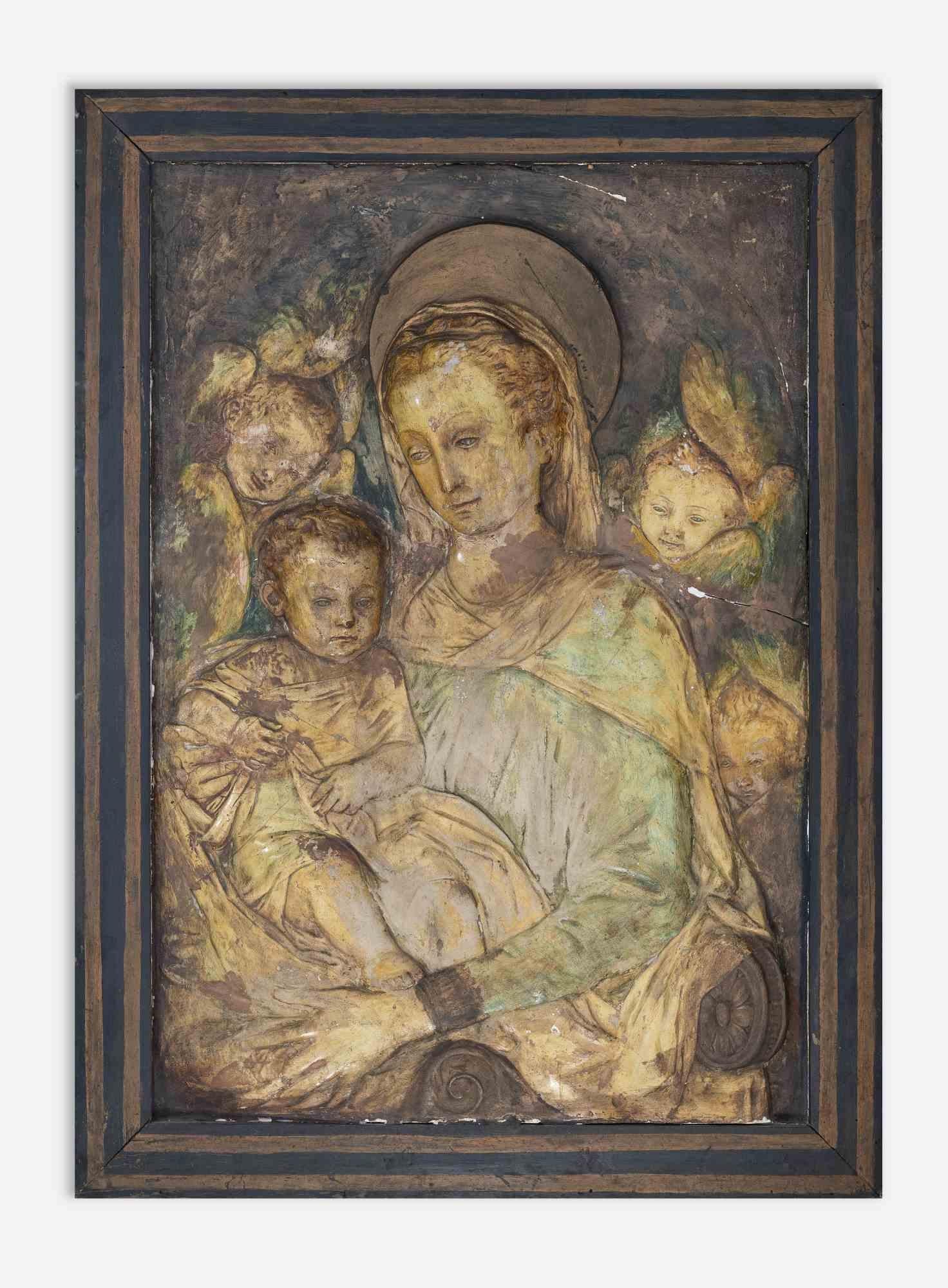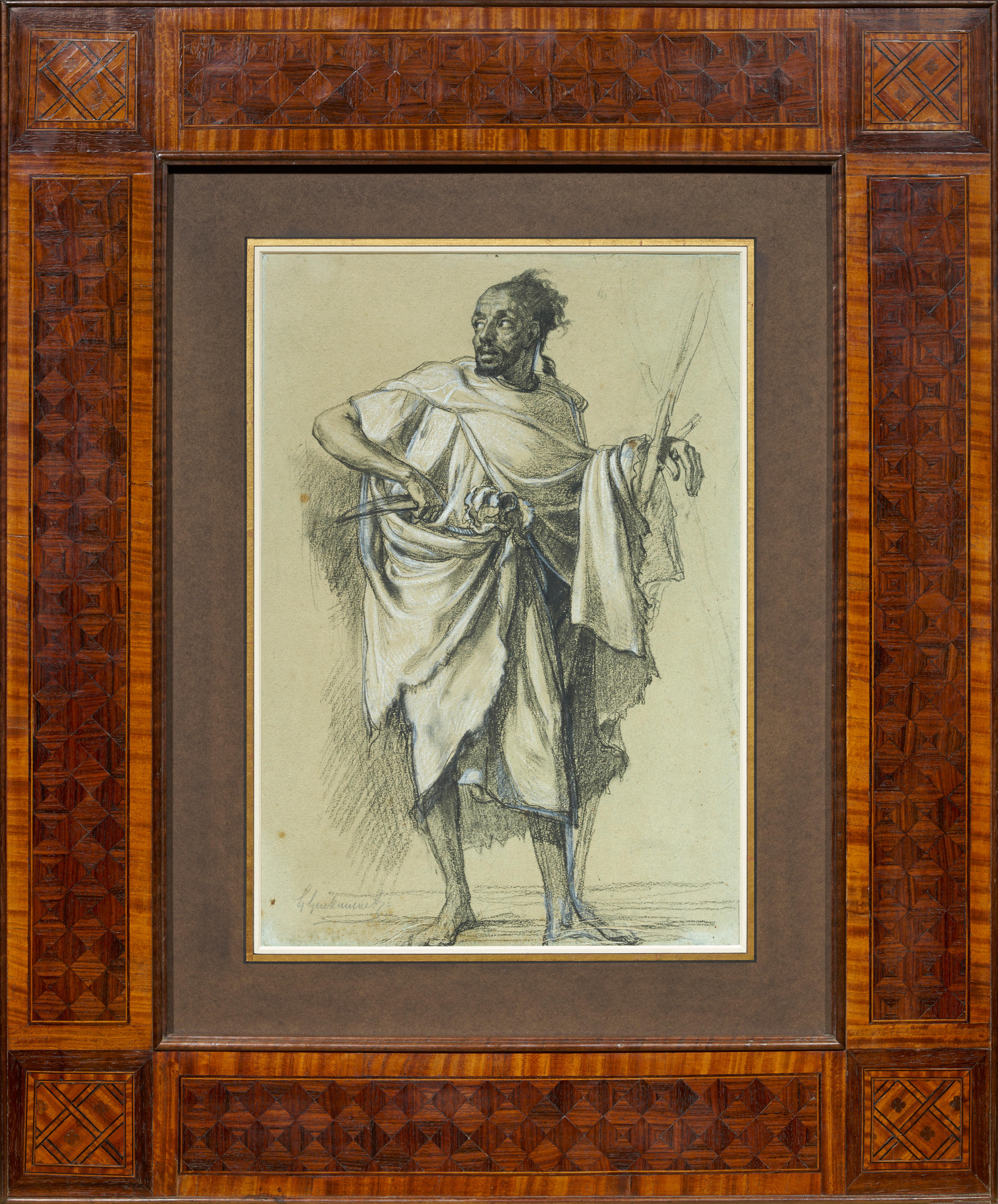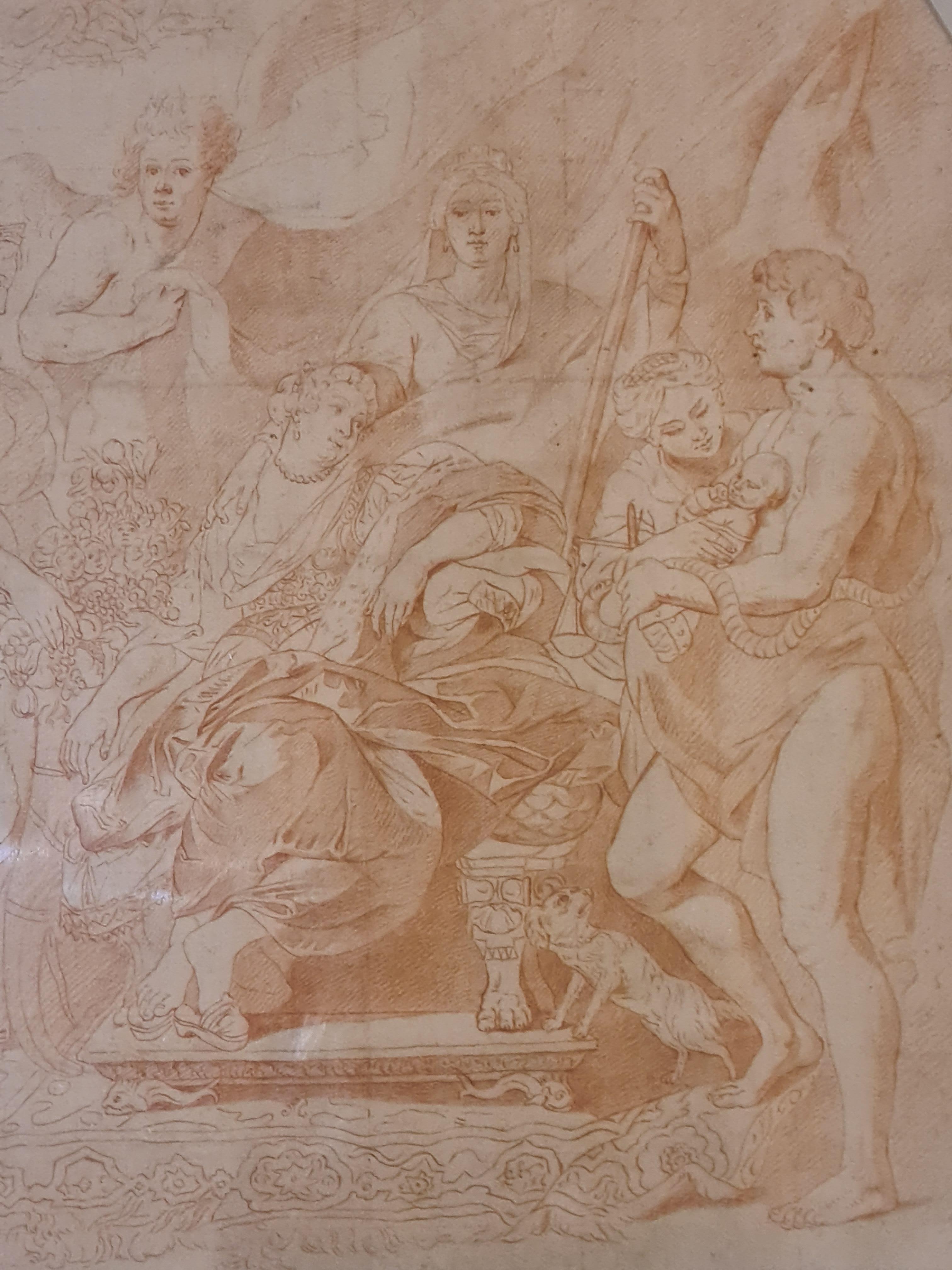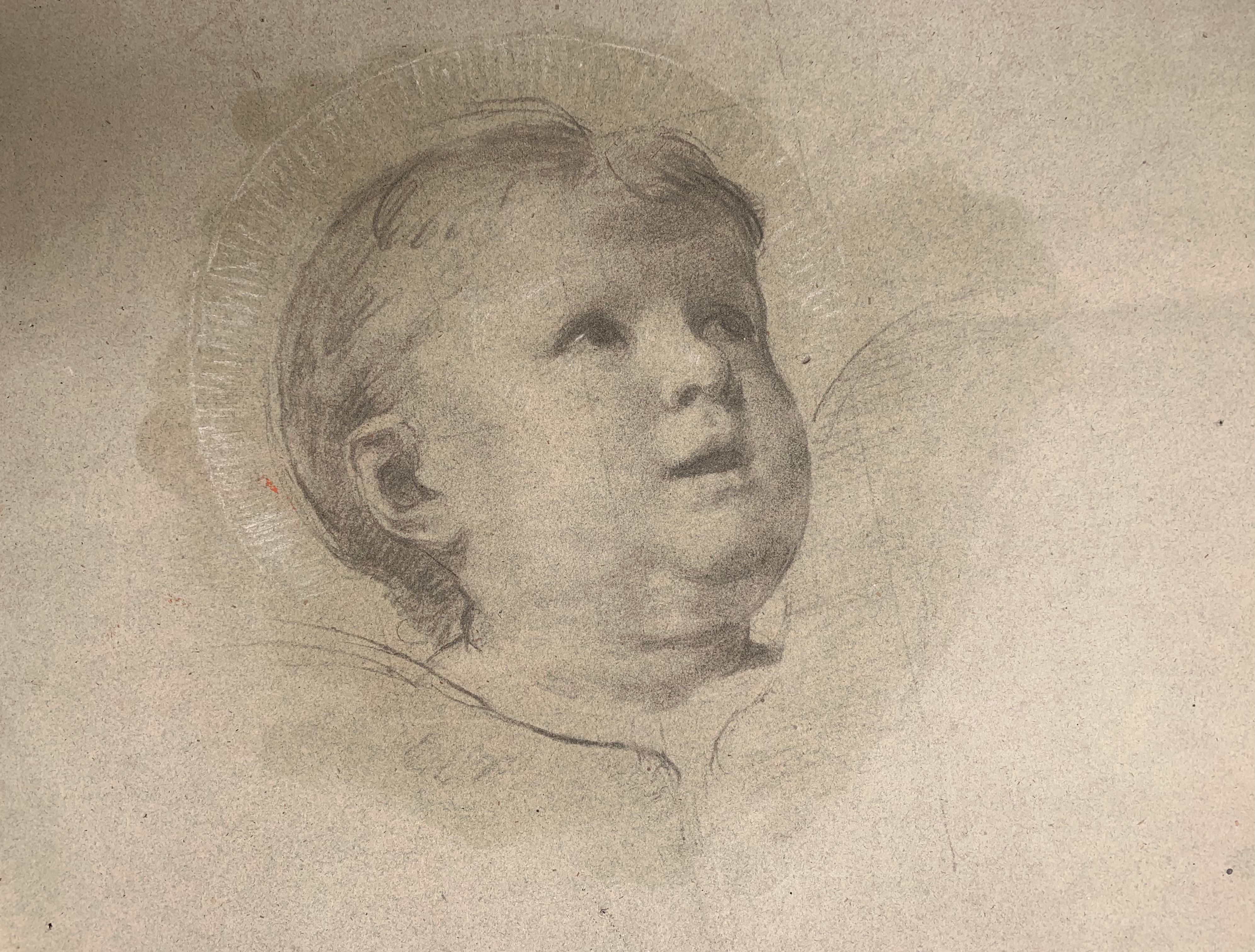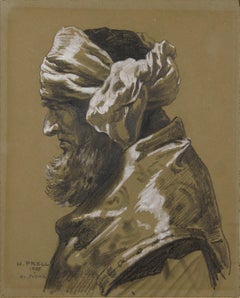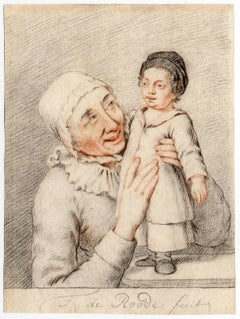
Untitled - Grandmother smiling at a (grand)child.
View Similar Items
1 of 2
Theodorus de RoodeUntitled - Grandmother smiling at a (grand)child.1750
1750
About the Item
- Creator:Theodorus de Roode (1736 - 1791, Dutch)
- Creation Year:1750
- Dimensions:Height: 8.27 in (21 cm)Width: 6.23 in (15.8 cm)
- Medium:
- Period:
- Condition:Large margins.
- Gallery Location:Zeeland, NL
- Reference Number:Seller: 48988 Q-191 LATPC1stDibs: LU59231795993
You May Also Like
- Head of a Cheerful Man Wearing a CapLocated in New York, NYWatermark: the arms of Amsterdam Provenance: Christie’s, Amsterdam, 1 December 1986, lot 46; where acquired by: Private Collection, New York Literature: Roger Adolf d’Hulst, “Jordaens Drawings: Supplement II,” Master Drawings, vol. 28, no. 2 (1990), pp. 153-156, no. A237a, fig. 17. Matías Díaz Padrón, Jacob Jordaens...Category
17th Century Baroque Portrait Drawings and Watercolors
MaterialsChalk, Paper
- Young elegant woman in a hatBy Edgar ChahineLocated in Genève, GEWork on paper Brown wooden frame with glass pane 92 x 73 x 5 cmCategory
Early 20th Century French School Portrait Drawings and Watercolors
MaterialsChalk, Pastel
- Half-length portrait of a Pharisee - In the shadow of betrayal -Located in Berlin, DEHermann Prell (1854 Leipzig - 1922 Dresden-Loschwitz). Half-length portrait of a Pharisee, 1885. Sketch for the right-hand figure in the painting Judas Iscariot, 1886. Pencil drawing heightened with opaque white and black chalk on beige-grey wove paper (papier vélin), 34 x 27.8 cm (visible size), 52 x 45 cm (mount), signed, dated and inscribed "H. PRELL 1885 zu 'Judas'". Minor browning, collection stamp on the reverse. - In the shadow of betrayal - About the artwork This painting is the sketch for the head of the Pharisee offering the coins to Judas in one of Herrmann Prell's major works, the painting Betrayal of Judas, completed in 1886. The painting belongs to the Staatliche Kunstsammlungen Dresden and is illustrated in Adolf Rosenberg: Prell, Bielefeld and Leipzig 1901, p. 21 (Fig. 19). It is especially highlighted in Thieme-Becker (vol. 27, p. 376). Hermann Prell, Betrayal of Judas, 1886 The monumental head, which fills the picture and is distinguished by its ornamented robe, is almost a lost profile, which in the executed painting is justified by the Pharisee's turning towards Judas. Despite the fact that the sitter withdraws from the viewer by turning away, it was necessary to artistically elaborate the motivation for the purchase of one of Christ's disciples, which is why the drawing focuses on the expression of the face, while the 'accessories' are treated in a more summary manner. In characterising the face, Hermann Prell performs a balancing act: since the Pharisee, despite his destructive actions, is an actor in the history of salvation, the head must show a dignity appropriate to the event, but at the same time the physiognomy must also bear witness to the scheming attitude that led to the betrayal. To solve this dilemma, Prell draws on the traditional depictions of the heads of the apostles, shading the face to indicate the obdurate darkness of the spirit and moving the base of the nose slightly upwards while the mouth falls away, thus giving a physiognomic expression to the motivation of the action. The fatal drama of the betrayal is expressed in the monumentalisation of the head and in the thunderous white highlights that contrast with the darkness of the chalk. As a study, considered by the artist to be a work in itself, this drawing reveals the pictorial problems and brainstorming of monumental painting. About the artist In 1872 Prell, who was one of the most important exponents of monumental painting of his time, began studying painting with Theodor Grosse at the Dresden Academy of Art and continued with Carl Gussow at the Berlin Academy in 1876. Hans von Marées taught him in Rome in 1878. More influential on his work, however, were Arnold Böcklin and Max Klinger, with whom Prell had been friends since his student days and with whom he worked together on several occasions. Prell's first major work, which established his reputation as a monumental painter, were the frescoes in the banqueting hall of the Architektenhaus in Berlin in 1881/82, commissioned by the state and depicting the different periods of architecture. Prell then went to Italy for two years to study fresco painting. Other major commissions followed. These included monumental frescoes in the town halls of Worms (1884), Hildesheim (1882-92), Gdansk (1895) and Dresden, the staircase of the Silesian Museum of Fine Arts in Breslau (1893/94), the throne room of the German Embassy in Rome (1896-99) and the staircase of the Albertinum in Dresden (1900-1904). From 1886 Prell taught at the academy of arts in Berlin and in 1892 he was appointed professor at the academy of arts in Dresden. His students included Osmar Schindler and Hans Unger...Category
1880s Realist Figurative Drawings and Watercolors
MaterialsChalk
$1,314 Sale Price20% Off - Study of a saint, circa 1875-79, Preparatory drawingLocated in PARIS, FRMelchior DOZE (1827-1913) Study of a saint, ca. 1875-79 Preparatory drawing for the decoration of the church of Saint-Félix de Saint-Gervasy (Gard), chapel of the Cross (south side...Category
1870s Academic Figurative Drawings and Watercolors
MaterialsChalk, Paper, Graphite
- "Self Portrait Conte Sketch" rare Ben Fenske work on paper - academic studyBy Ben FenskeLocated in Sag Harbor, NYA colorful self-portrait from Ben Fenske, staring at the viewer straight-on. Hues of red dominate. Unframed. Ben Fenske (b. 1978) although a native of Minnesota, and has been worki...Category
Early 2000s Academic Portrait Drawings and Watercolors
MaterialsPaper, Conté
- Head Study, 1930By John SloanLocated in Missouri, MOHead Study, 1930 John Sloan (1871-1951) Signed Lower Right 10.5" x 9" Unframed 19" x 16.5" Framed Born in Lock Haven, Pennsylvania, John Sloan became one o...Category
Early 20th Century Ashcan School Portrait Drawings and Watercolors
MaterialsConté, Paper
Price Upon Request
